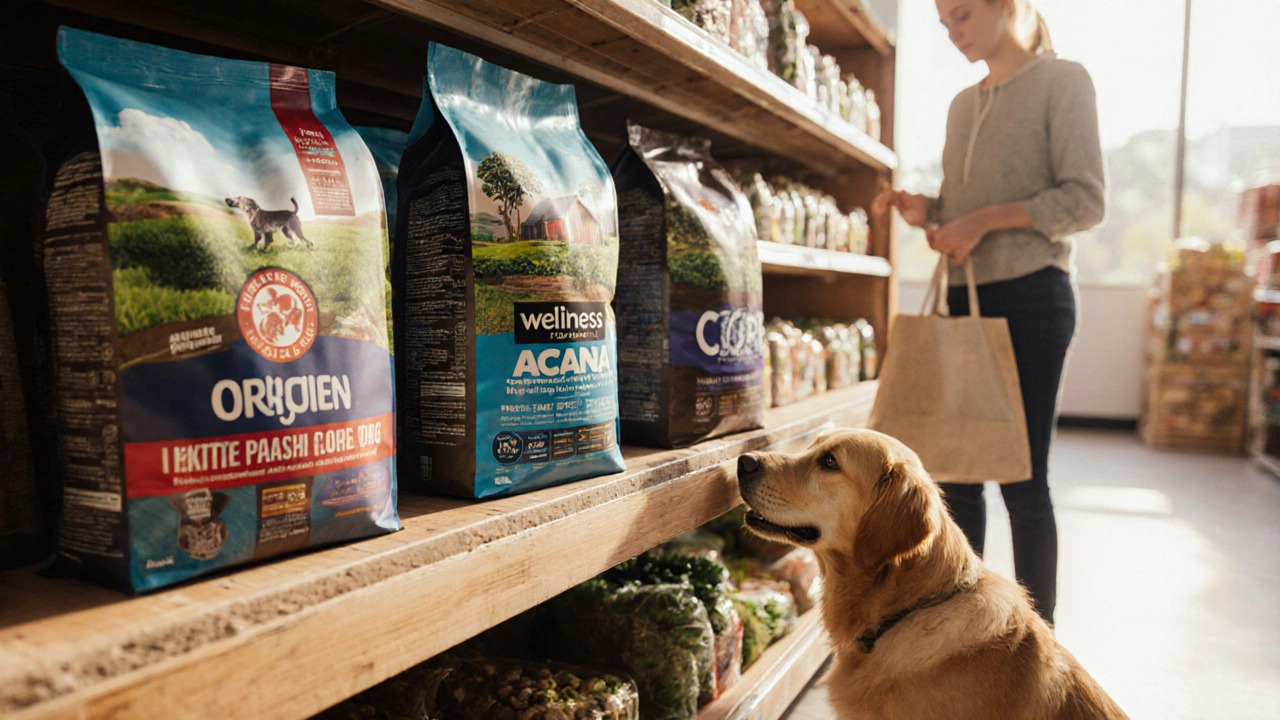Best Dog Food: How to Pick the Right Bowl for Your Pup
Choosing the right food can feel overwhelming with so many bags on the shelf. The good news is you don’t need a degree in nutrition to make a smart pick. Focus on three things: life‑stage, ingredient quality, and trusted standards like AAFCO.
First, match the food to your dog’s age. Puppies need higher protein and calories to fuel rapid growth, while adult dogs do best with balanced calories to maintain weight. Seniors benefit from joint‑supporting nutrients and easier‑to‑digest proteins. Mixing life‑stage labels is a common mistake that can lead to over‑ or under‑feeding.
What Makes a Dog Food the Best?
Look for a short ingredient list where the first item is a real meat source – chicken, beef, or fish. Avoid meals that hide meat meals or by‑products behind vague terms like "protein derived from meat". Whole grains or potatoes are fine, but they shouldn’t dominate the formula.
Check for an AAFCO statement. It tells you the food meets minimum nutrient requirements for the life stage it’s labeled for. If a brand claims "vet‑approved" but lacks the AAFCO note, treat it with caution.
Prescription or therapeutic diets are great for specific health issues, but for everyday feeding they’re usually overkill. Stick to regular, high‑quality kibble or wet food unless your vet recommends otherwise.
Top Picks for Puppies, Adults, and Seniors
Puppy Picks: Look for foods with at least 30% protein and DHA for brain development. Brands like Orijen Puppy and Taste of the Wild High Prairie Puppy rank high because they use fresh meat and limited fillers.
Adult Picks: A balanced 24‑28% protein formula works for most dogs. If your dog has a sensitive stomach, try a limited‑ingredient diet such as Blue Buffalo Basics or Wellness CORE.
Senior Picks: Senior formulas often add glucosamine and chondroitin for joint health. Consider Hill’s Science Diet Senior or Royal Canin Size Senior, both of which meet AAFCO senior standards.
When you read reviews, focus on real‑world results. Our post “What Vets Really Say About Beneful Dog Food” breaks down a popular brand’s ingredient list and shows why many vets prefer whole‑meat formulas. If you’re switching foods, do it gradually over a week – mix increasing amounts of the new food with decreasing amounts of the old to avoid tummy upset.
Portion size matters just as much as the brand. Follow the guidelines on the bag, but adjust for your dog’s activity level, breed, and metabolism. A high‑energy Border Collie will need more than a couch‑loving Bulldog, even if they’re the same weight.
Finally, keep an eye on your dog’s coat, stool, and energy levels. Shiny fur, firm stools, and steady vigor usually mean the food is doing its job. If you notice dull coat, frequent gas, or weight changes, it’s time to re‑evaluate the formula.
With these basics, you can cut through the hype and choose a food that keeps your dog healthy, happy, and ready for the next adventure.
Top 3 Dog Food Brands Ranked for 2025
Discover the top three dog food brands for 2025, compare their protein, ingredients, and prices, and learn which one fits your pet's life stage and health needs.
Best Dog Food for Dogs: Vet Recommendations for 2025
Wondering what dog food vets actually recommend? This guide cuts through marketing buzz and gets straight to what matters for your dog's bowl. Discover which ingredients matter most, if grain-free is really better, and which brands have earned their stripes in veterinary clinics. Plus, snag real tips on reading labels and dodging common dog food marketing traps. Your dog's next meal just got smarter.

